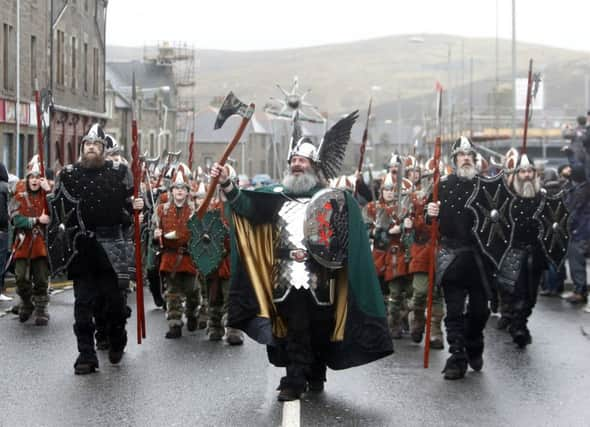Vikings still running rampant in Scottish DNA


After compiling thousands of samples from across the UK over the past four years, researchers at Scotland’s DNA have apparently uncovered evidence on the differences between England and Scotland’s ancestral DNA.
The team tested the genetic makeup of more than 5,000 men across the UK, tracing their past through markers on the Y-chromosome DNA passed from father to son.
Advertisement
Hide AdThe researchers used men as women historically moved around more, often due to marriage.
Alistair Moffat, historian and co-founder of the business, said: “We measured all of this DNA and started to realise there was a real difference between places in the UK. They are really quite striking. There is no doubt of the impact these invaders had on Scotland’s population.”
Researchers found 12 per cent of men in Argyll and south Scotland carried the M222 chromosome, which is believed to have been brought over from Ireland from the fifth century, when Irish invaders crossed the North Channel. These men are believed by the researchers to be direct descendants of the first Irish High King – Niall Noigiallach.
This DNA is very rare in England, with no appearance in East Anglia, 1 per cent in Yorkshire and central England, and 2 per cent in the South-east and the South-west. Scots comedian Rory Bremner was among those who shared this DNA.
One of Scotland’s lost tribes, the Picts, have also been traced after disappearing from their heartlands near the rivers Forth and Clyde following Viking attacks in the ninth century.
In the heartland of the southern Pictish kingdoms, Tayside, Perthshire, Fife and Angus, nearly one-fifth of men carry the Pictish male lineage.
Advertisement
Hide AdThis marker is barely present in England with an average of 1 per cent of men carrying the genetic code.
Vikings are still running rampant through Scotland as, according to the researchers, 29.2 per cent of descendants in Shetland have the DNA, 25.2 per cent in Orkney and 17.5 per cent in Caithness. This compares with just with 5.6 per cent of men in Yorkshire carrying Norse DNA.
Advertisement
Hide AdIt was Germanic invaders who ravaged the English coast instead, leaving a trail of genetic footprints in their wake.
The German Y chromosome R1b S21 is found at a high frequency of 29 per cent in the east, compared with a range of 19-24 per cent across the rest of England.
The percentage drops as low as 9 per cent in the South-west of Scotland.
Chief scientist Dr Jim Wilson said: “It actually tallies really well with what we learn in history but I was delighted to see these really fine patterns emerge across Britain – some of which are quite specific.”
The team collated the information based on where participants’ grandparents were born, to remove the migratory patterns of more recent generations.
Dr Wilson, also a reader in Population and Disease Genetics at Edinburgh University, said: “This data allows us to really look back into the past and make discoveries only DNA can show.”
Scotland’s DNA now plans to conduct the same process in women, using mitochondrial DNA passed from mother to daughter.